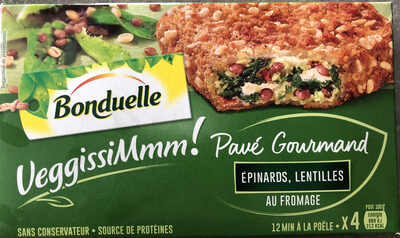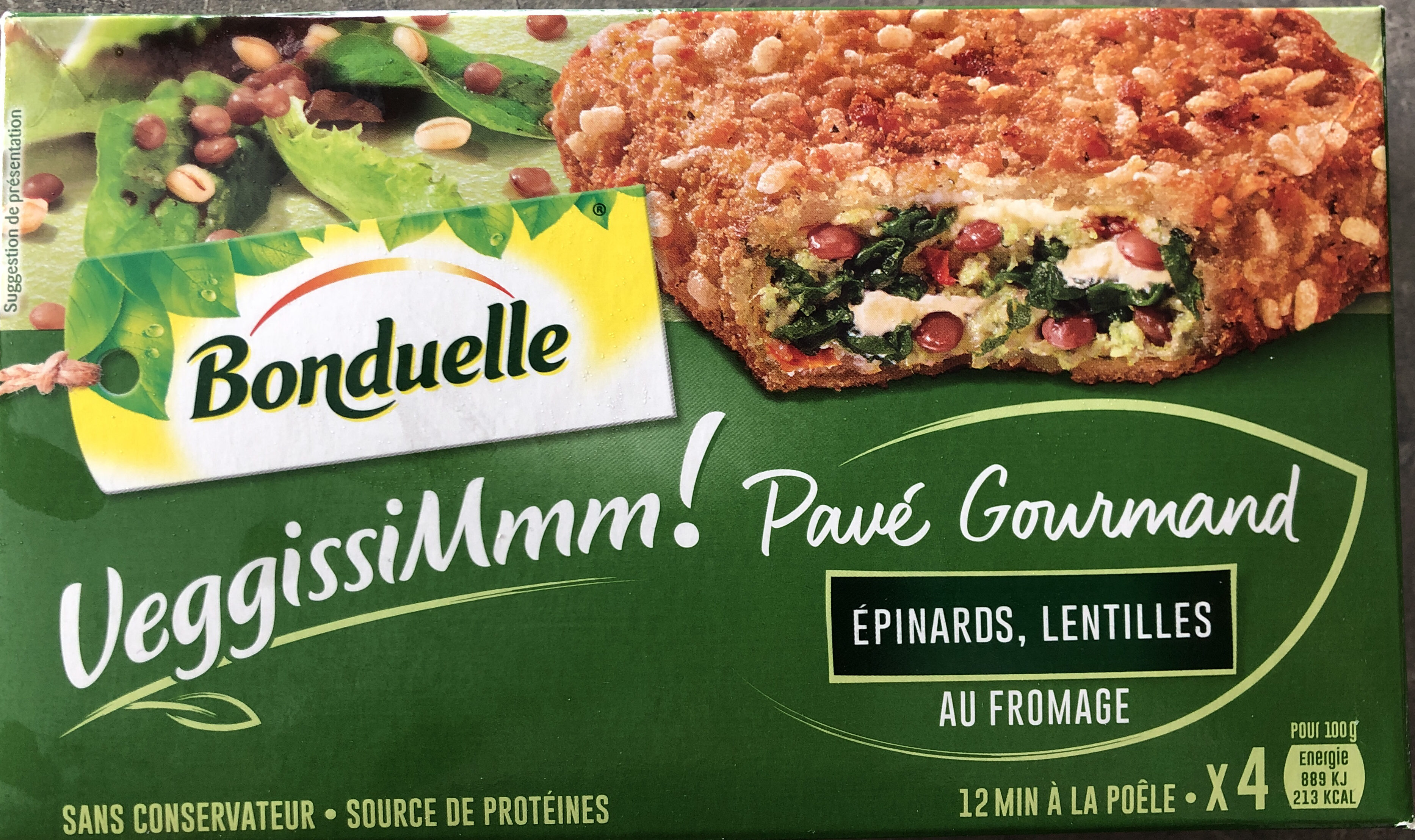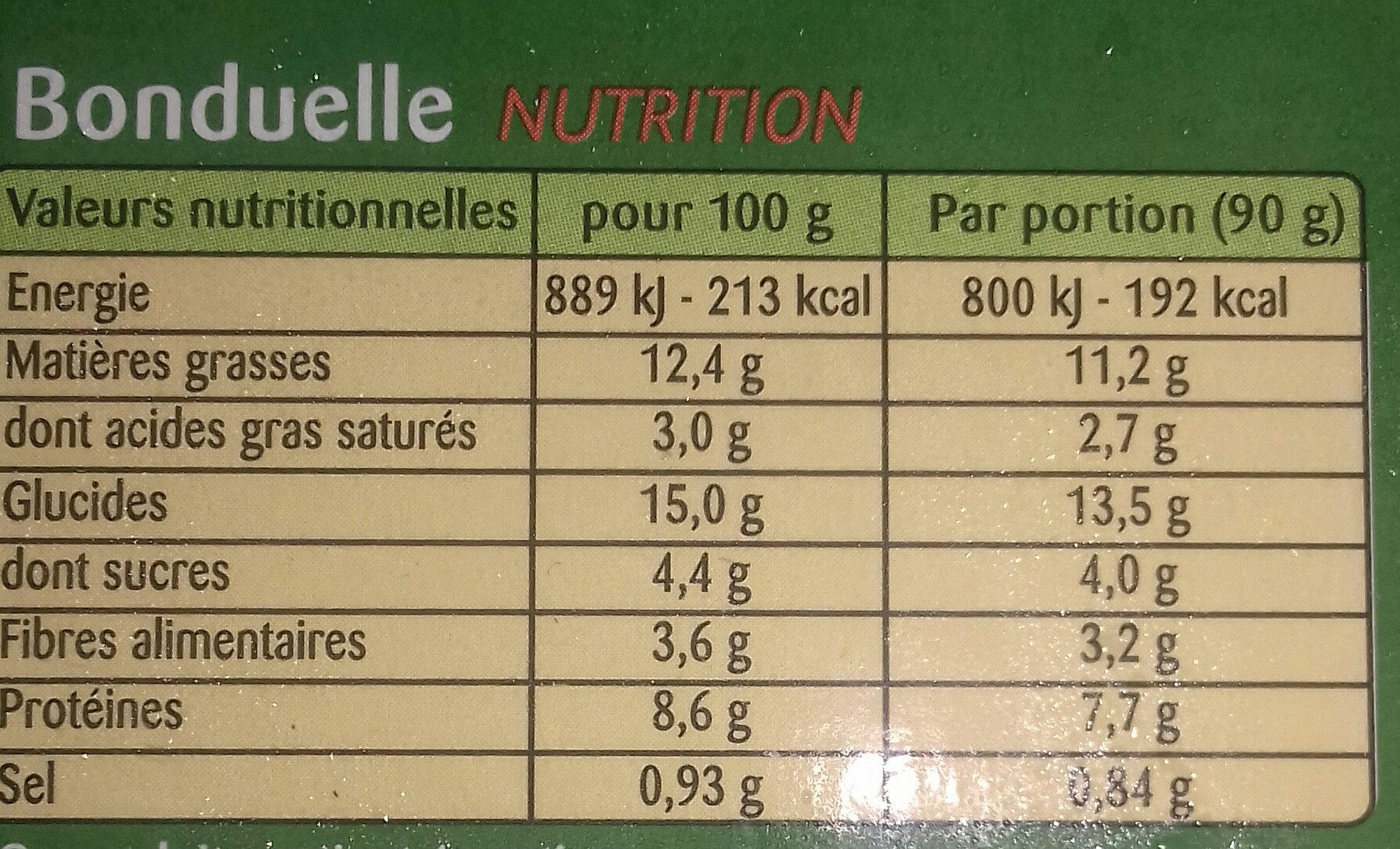Pavé gourmand Epinards, lentilles au Fromage - Bonduelle - 360 g
This product page is not complete. You can help to complete it by editing it and adding more data from the photos we have, or by taking more photos using the app for Android or iPhone/iPad. Thank you!
×
Some of the data for this product has been provided directly by the manufacturer Bonduelle.
Barcode: 3083681086737 (EAN / EAN-13)
Common name: Pavés de légumes, céréales et fromage cuisinés, panés, préfrits surgelé
Quantity: 360 g
Packaging: fr:Boite carton
Brands: Bonduelle
Categories: Plant-based foods and beverages, Plant-based foods, Snacks, Salty snacks, Meals, Prepared vegetables, Plant-based meals, Vegetable cakes
Labels, certifications, awards: No preservatives
Countries where sold: France
Matching with your preferences
Environment
Packaging
Transportation
Other information
Conservation conditions: Modes de conservation : Dans le casier à glaçons de votre réfrigérateur : 3 jours Congélateur *** à -18°C : Plusieurs mois
Customer service: Service consommateurs Bonduelle, Service consommateurs Bonduelle BP 30173 Villeneuve d'Ascq
Report a problem
Data sources
The manufacturer Bonduelle uses CodeOnline Food to automatically transmit data and photos for its products.
Manufacturers can use the Open Food Facts free plaform for producers to access and complete this data, and to obtain reports, analysis and product improvements opportunities (e.g. better Nutri-Score).
Product added on by kiliweb
Last edit of product page on by roboto-app.
Product page also edited by corrigo, genevievec, openfoodfacts-contributors, org-bonduelle, packbot, quentinbrd, vaporous, yuka.UW80eEhJb2ordWdMdVBBNSt6ZUY2bzVseTY2WURXNjJJZkFVSVE9PQ.










